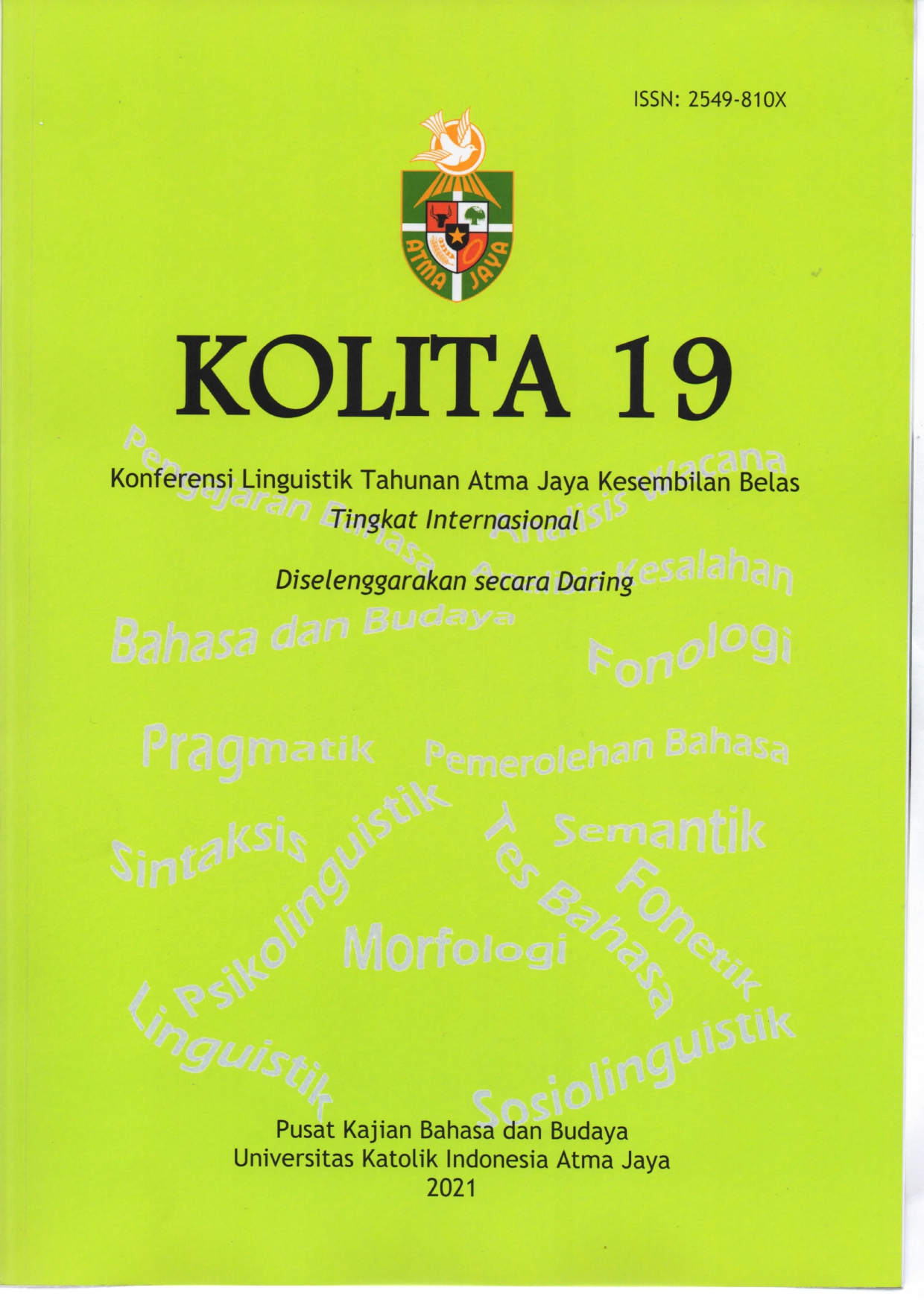ETHNOLINGUISTIC STUDY OF AGRICULTURAL SIGN LANGUAGE KATA KOLOK BENGKALA BULELENG BALI
Keywords:
Ethnolinguistic, Kata Kolok, sign language, farm, environmentAbstract
The character of the Bengkala kolok (deaf) residents is known to be easy to get along with, initiative-people and hard-workers. This is due to the warm acceptance of Bengkala villagers who care about the existence of the kolok brothers and sisters who live and stay with them. Most of the kolok people support themselves by working as farmers or agricultural laborers, and when there is no agricultural work, there are also those who seek casual work as manual labor in building constructions or repairing roads or waterways. This research specifically wants to find out more about the word Kolok sign language which has a meaning related to the agricultural and plantation realms and to discover how wide sign language Kata Kolok describes Bengkala culture. By doing this research, obtaining sign language use, it can be found as well the value of Kolok people among their relatives and their village society. The data of this research is in the form of corpus data that is processed from video recordings which are converted into images combined with sign translation transcriptions that are matched with the image. The data collection method used is the go fishing method; by recording and note-taking techniques. Some informants, either from the hearings or the deafs, are involved in this research to provide information and reconfirmation. Meanwhile, the data analysis method used a descriptive qualitative method with structural and ethnolinguistic analysis of kata kolok which focused on agricultural signs. The analysis is conducted not only from the sign language meaning and function but also from cultural points of view. The results of this study are various agricultural signs in Kata Kolok which are categorized according to the following parameters: (1) agricultural-equipment signs, (2) plant signs, (3) livestock signs, (4) religious ceremonial ritual signs in agriculture, and (5) other farming-related signs.






